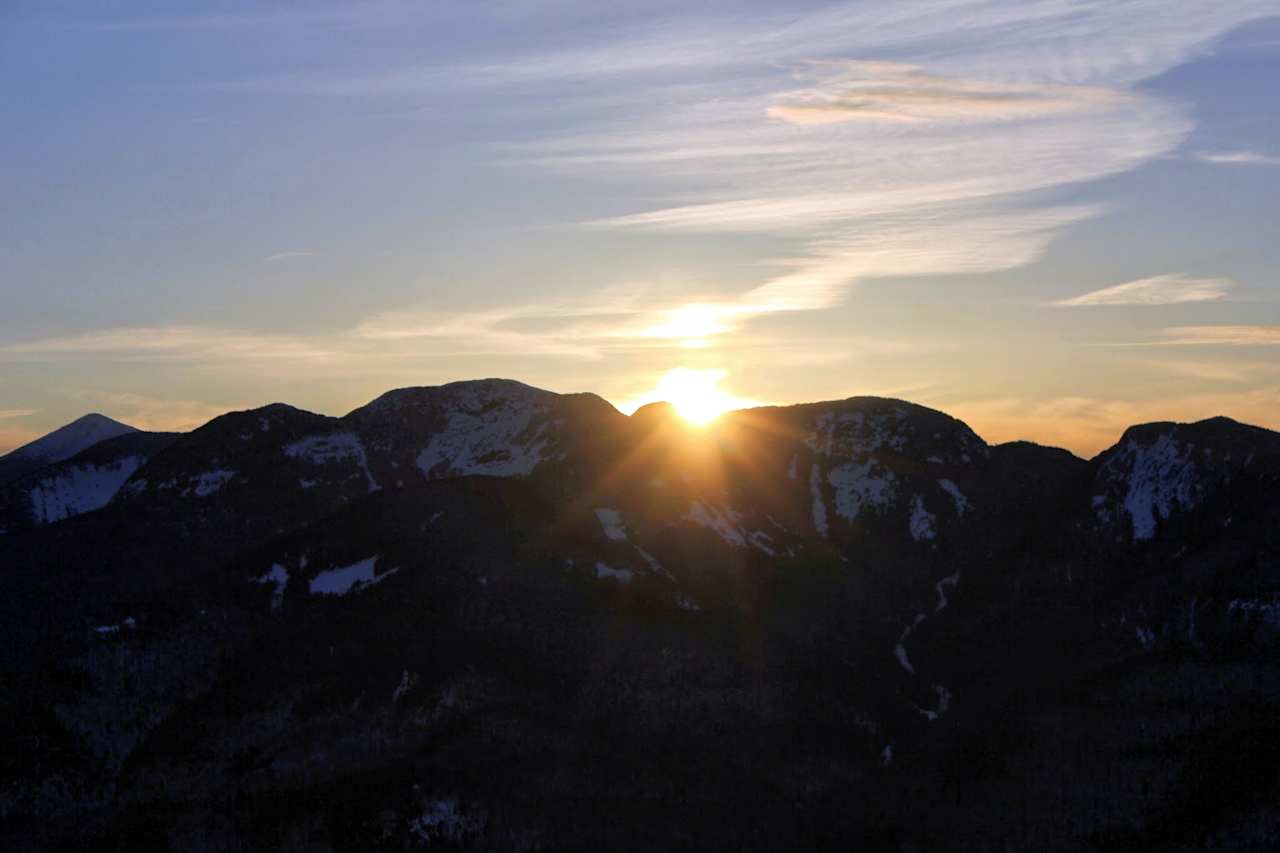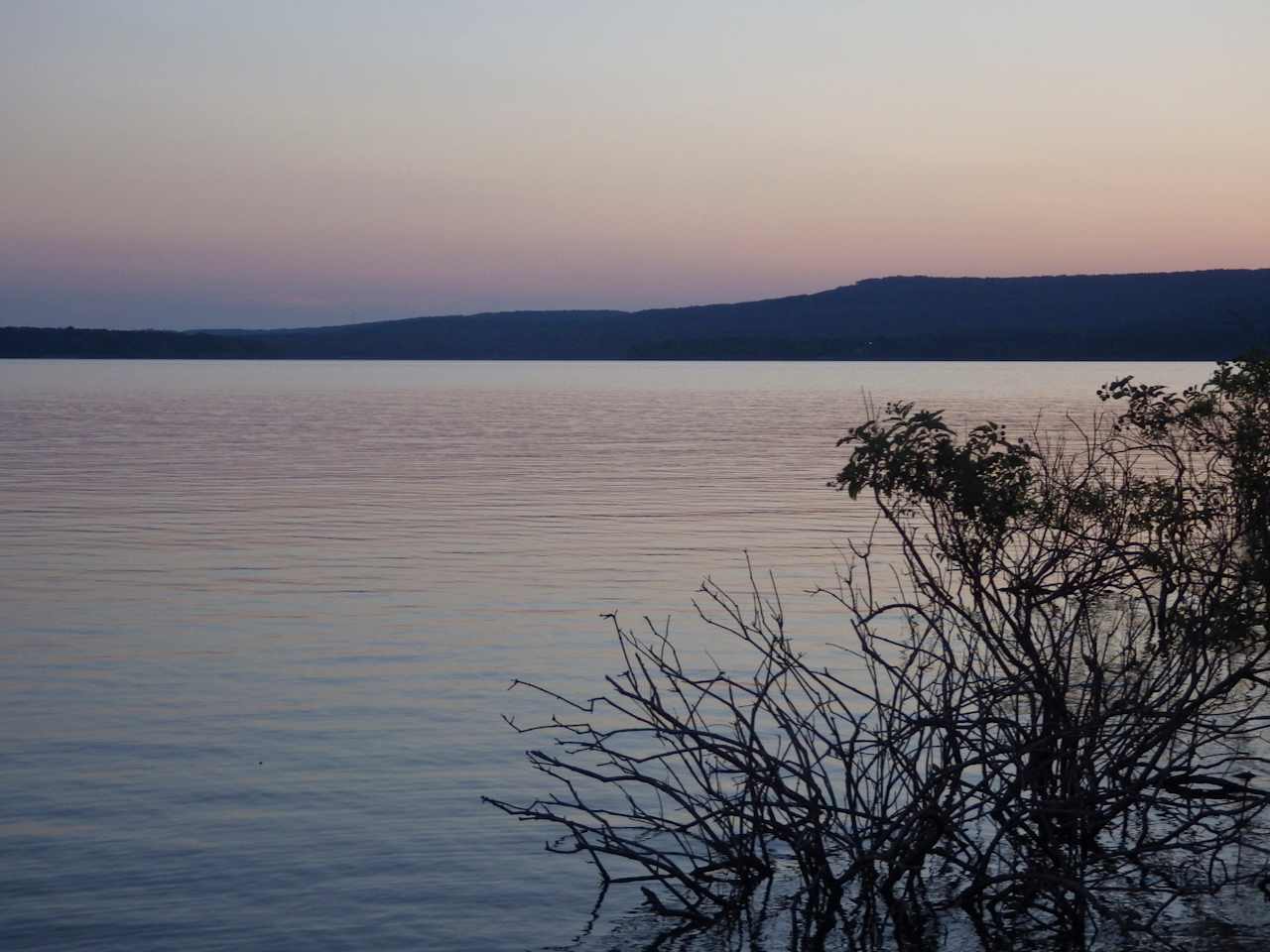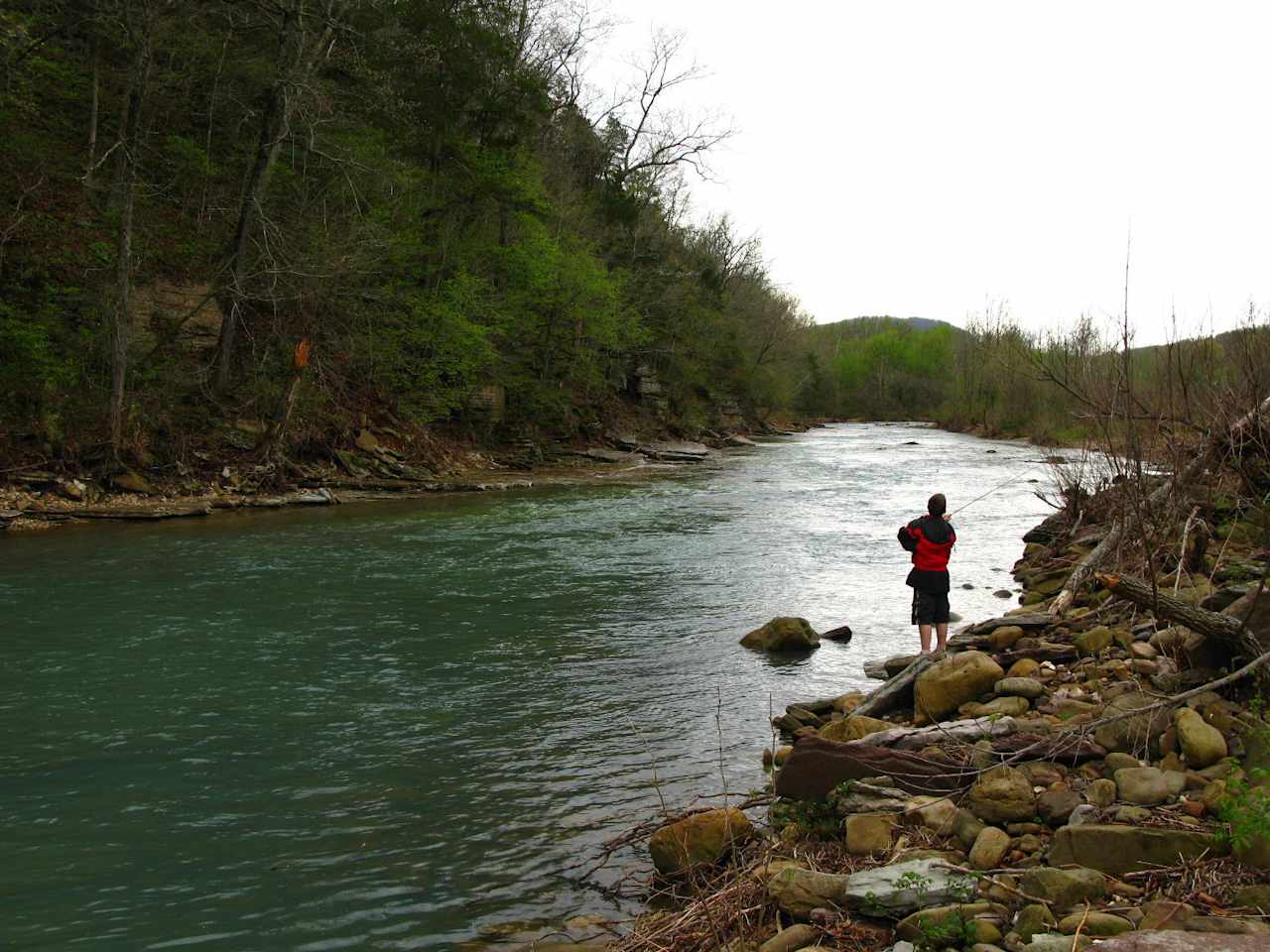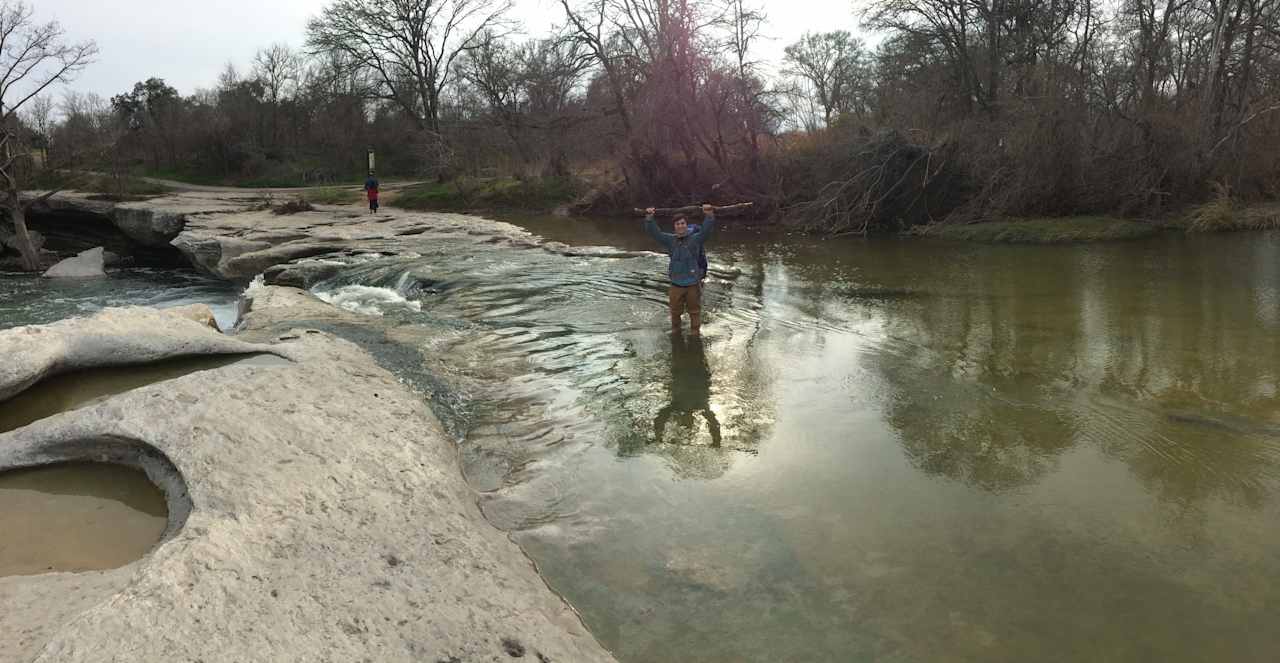Best camping spots for the 2024 solar eclipse
The moon will pass in front of the sun for a total solar eclipse on the afternoon of Mon. April 8—the last major eclipse in the US until 2045!
- 2024 Solar Eclipse
Explore Hipcamp’s interactive 2024 solar eclipse map.
Discover and book the best campsites and RV spots in the path of totality—you don’t want to miss this.
Camping trips for every style
Find your new favorite spot.


Nearby parks
Explore the area’s public lands.
Best camping spots for the 2024 solar eclipse guide
Overview
Your 2024 Total Solar Eclipse Camping Guide
Eclipses of any kind are special and rare, but the total solar eclipse is considered the holy grail of them all. During a total solar eclipse, the moon completely blocks out the sun for a few minutes. Picture this: the sky goes dark during the middle of the day, stars and planets become visible, and animals behave differently. The sun's atmosphere, known as the corona, becomes visible with your naked eye. This spectacular sight, which looks like lines radiating away from the sun, is only visible for a few minutes and then it's gone again—usually for decades.
Witnessing this ultra-rare event leaves a lasting impression, and it's difficult to overstate a total solar eclipse's impact. For most people, it is a truly once-in-a-lifetime event—the next one in North America won't occur until 2045!
At Hipcamp, we're here to help you get the best view! Use our interactive eclipse map to find and book the very best campsites and RV spots in the path of totality so you can experience the wonders of a total solar eclipse with your own eyes.
What is a solar eclipse?
A solar eclipse is when the moon passes in front of the sun. There are four different types of solar eclipses, but the most spectacular is a total solar eclipse, like the one taking place in April 2024. During these rare cosmic alignments, the moon completely blocks out the sun for a few minutes. This period, known as totality, offers views of the sun's atmosphere, or corona. The corona is what comes to mind when most people imagine a solar eclipse, and can be seen with the naked eye or a camera during totality. Want to know about the phenomenon? See our eclipse Q&A.
How do I get reservations for the 2024 eclipse?
We're here to help! The Hipcamp 2024 solar eclipse map showcases all of the best campsites in every state along the path of totality so you can secure your prime viewing spot. State and national park campgrounds tend to book up extremely far in advance even without a rare phenomenon like the eclipse, so we work hard to unlock access to more places to get outside so everyone can experience nature. That said, you’re still going to want to try to book your eclipse campsite well in advance, as this is expected to be the most popular camping event in 2024. Spots are limited!
What time is the 2024 solar eclipse?
In the United States, the 2024 solar eclipse will begin in Texas at 1:27 pm CT and will end in Maine at 3:35 pm ET on Monday, April 8, 2024. Depending on your location, the total solar eclipse can last for as long as over four minutes, or as short as one minute, with Texas experiencing the longest times and the highest chance of clear weather for viewing.
How do I check when my campsite will see the eclipse?
To find out when the eclipse will reach your campsite—or any location—check out this interactive map. It shows when the eclipse will begin and end in any given area, as well as how long the partial and total portions of the eclipse last. Plus, you can see how cloudy a location was in previous years on April 8.
Best 2024 eclipse camping destinations
Texas eclipse camping
Texas is largely considered the best place in the US to see the 2024 eclipse for two reasons. First, Texas offers the best chance at the clear skies required to see the eclipse on an April afternoon. Second, the eclipse will be at its longest in the US here—up to 4 minutes and 24 seconds in Eagle Pass (at 1:27pm CDT) on the US-Mexico border in South Texas. Austin and San Antonio will get about 1 minute and 45 seconds, while Dallas, Fredericksburg, and Texas Hill Country will see the total eclipse for just under or over 4 minutes (at 1:40pm CDT). Luckily, the path runs through what is a camping hotspot in Texas, meaning eclipse viewers can book wide-open campsites—think 200-acre properties with bathrooms, farm animals, and lots of room to set up camp. See all Texas eclipse camping, or try your luck below at one of the Texas state parks within the path of totality.
Oklahoma eclipse camping
Next up, totality hits a small slice of Oklahoma at about 1:45pm CT. Campers from Oklahoma City will only have to drive a short way to see the full effect—try border areas like Heavener or Pushmataha County for a short window, or cross over into Texas or Arkansas for a better view. See all Oklahoma eclipse camping, or look for an eclipse camping spot at an Oklahoma state park below.
Arkansas eclipse camping
Totality begins at 1:46pm CDT in Arkansas, which houses just one of two national parks within the path of totality: Hot Springs National Park will certainly be a popular spot come April 8 (as will Cuyahoga Valley National Park in Ohio). The capital city of Little Rock is in prime territory (totally will last 2 minutes and 20 seconds), while nearby Conway boasts the longer 3 minute and 53 second eclipse at 1:53pm CDT. Escape town out into Ouachita National Forest or the Ozarks for a more natural setting. See all Arkansas eclipse camping, or check out a state park within the path below.
- Petit Jean State Park
- Pinnacle Mountain State Park
- Daisy State Park
- Mount Nebo State Park
- Lake Ouachita State Park
Missouri eclipse camping
Southeast Missouri is in for a treat in 2024. Cape Girardeau will see just over four minutes of totality, as will Mark Twain National Forest, a popular spot for dispersed camping. Kansas City and St. Louis are not in the path of totality, but city residents won’t have to go far to see the phenomenon. See all Missouri eclipse camping.
Kentucky eclipse camping
Only a small portion of Kentucky’s northwest corner will be in the eclipse’s path of totality. Small towns in the area will see up to 2 minutes and 30 seconds of totality, but for a better and longer view, head north into Indiana. See all Kentucky eclipse camping.
Illinois eclipse camping
Although a smaller town, Carbondale, Illinois, will see a relatively long eclipse of about 4 minutes and 8 seconds, starting at 1:49pm CT. Nearby Marion and Harrisburg will put on solid shows too, and outside of town, Shawnee National Forest is a nice nature spot for RV camping and tent camping during the eclipse. See all Illinois eclipse camping.
Indiana eclipse camping
Full totality begins in Indiana at 3:02pm CT and passes through the state’s central swath, including cities like Evansville and Indianapolis. Around Bloomington, eclipse-chasers will see Indiana’s longest duration of totality at just over 4 minutes at 3:04pm ET. RVers can hit Hoosier National Forest, about an hour’s drive due south of Bloomington, to see the moon pass over the sun in a more natural setting. See all Indiana eclipse camping.
Ohio eclipse camping
Ohio will get a front-row seat to the 2024 eclipse, as much of the northeastern corner of the state—including Cuyahoga Valley National Park—sits within the path of totality. Head out from Cleveland, Akron, or Dayton to see the show at a wide-open campsite away from the city crowds. See all Ohio eclipse camping.
Pennsylvania eclipse camping
Pennsylvania’s northwest corner is the only place in the state with a good view—visit the lakeside area surrounding Erie to see totality start around 3:16pm ET. Here, totality will last 3 minutes and 40 seconds, perfect for an RV camping spot on a farm with wide open skies. See all Pennsylvania eclipse camping.
New York eclipse camping
As we move farther northeast, campers can expect cooler weather, with some areas likely to still be frozen for the April eclipse. Even still, glamping and RV trips will be popular in western and northern New York, where Lake Ontario, the Fingers Lakes, and the Adirondacks will all be within the path of totality. The Buffalo area will see the longest eclipse in the state for 3 minutes and 45 seconds at 3:18pm ET. See all New York eclipse camping.
Vermont eclipse camping
The eclipse’s path of totality will enter Vermont around Lake Champlain and Burlington at 3:25pm ET before exiting near Montpelier. In between, the Green Mountains are a top spot to set up camp or find an RV park and look up (while wearing your eclipse glasses, of course). See all Vermont eclipse camping.
New Hampshire eclipse camping
Only a small northern slice of New Hampshire, the North Great Woods, will see just the eastern line of the eclipse path, so most eclipse-chasers will head out of the state to other nearby hot spots. But if you do want to stick around the Granite State, areas within the North Great Woods like Pittsburg and Lake Francis State Park will see the eclipse for about three minutes at 3:28pm ET. See all New Hampshire eclipse camping.
Maine eclipse camping
The total solar eclipse skips over Maine’s cities in favor of putting on a show for more remote parts of the state, including the North Maine Woods, Mount Katahdin, and Baxter State Park. This wild area and its tiny towns will see the show for up to 3 minutes and 28 seconds, but campers should be wary of gray April weather clouding out the mountain views and the eclipse in this region. See all Maine eclipse camping.
Canada eclipse camping
Canada gets in on the action too. The path of totality will run through small swaths of Ontario and Québec before hitting the Maritime provinces of New Brunswick, Prince Edward Island, Nova Scotia, and Newfoundland and Labrador. Montreal will see the total eclipse, while travelers from Toronto, Ottawa, and Québec City will only have to drive a short distance to see it. Just be sure to consider the higher risk of cloud cover this far north.
Top camping tips for the 2024 total solar eclipse
- Book your travel well in advance. Public campgrounds, hotels, and even airline tickets usually completely book up many months ahead of an eclipse, so don’t wait!
- Plan to arrive early. You can expect unprecedented traffic before and after the eclipse, so be sure to get to your campsite early—at least the day before—so you don’t risk missing it.
- Pack the essentials, and then some. The usual conveniences may be hard to get to, and on-site amenities can be limited at some tent and RV campgrounds. Fill your vehicle’s gas tank and stock up early on food, water, and medicine.
- Protect your eyes. As with everything above, order your solar eclipse glasses well in advance. During the week before the eclipse, these glasses can become nearly impossible to find for sale online or in person.
- Be prepared to lose service. With millions of people flocking in from around the country, cell towers will likely become overwhelmed. Save your camping reservation details, download the Hipcamp app, and save offline maps. Be sure to let friends and family know where you’ll be and when they can expect to hear from you, too.
- Be in the moment. If you’re lucky enough to see a total solar eclipse, enjoy the incredible view and try to take it all in! Remember, these rare events only last for a few minutes, so enjoy it without the distraction of your phone.
What is so special about the 2024 solar eclipse?
The 2024 solar eclipse is special because it will be visible to tens of millions of people in North America. Thirty-one million people live in the path of totality within the United States alone. The next total solar eclipse that will be widely viewable from North America won’t occur until 2045!
Where will the 2024 total eclipse last the longest?
The 2024 total eclipse will last the longest in Mexico and Texas, with some locations along the center line seeing totality for over 4 minutes and 25 seconds. The center line is the direct center of the path of totality, and this is where totality will last the longest. The farther away from the center line, the shorter totality will last, so be sure to choose a location as close to the center line as possible for maximum eclipse viewing.






















